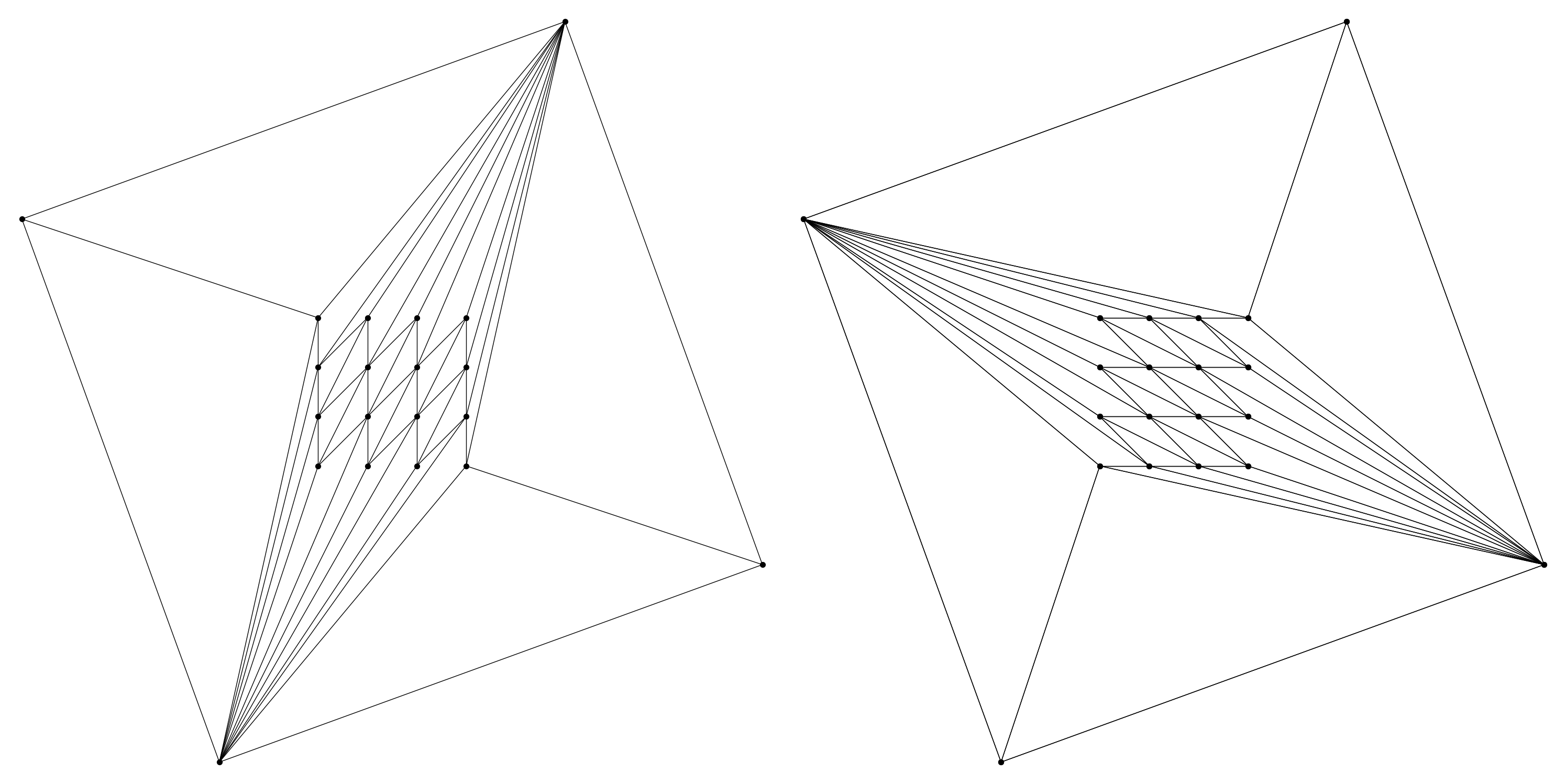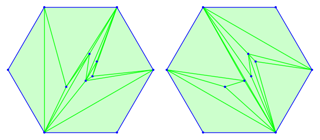Let $S$ and $T$ be two triangulations. We define $c(S,T)$ as the number of edges shared by $S$ and $T$.
With this, we can define
$f(n) = \min_{P} \min_{S,T} c(S,T)$.
Here the first minimum goes over all point sets in the plane of size $n$ and the second minimum goes over all triangulations $S$ and $T$ on $P$.
What do we know about $f(n)$? I am looking both for upper and lower bounds. I also would like to know what is currently known. In other words, I am looking for references, as the problem appears natural to me, and I expect that it might have been studied before.
I find particularly interesting the case that the convex hull of the point set is a triangle.






